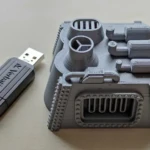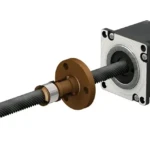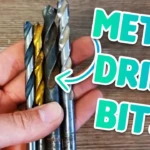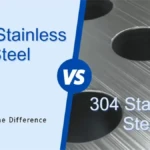Introduction
CNC machining relies on coolant nozzles to optimize production quality and efficiency, reduce wear, and manage heat.
CNC machining has revolutionized manufacturing, with coolant nozzles playing an essential role in improving precision, speed, and efficiency. Despite their importance, coolant nozzles are often underestimated. In this guide, we’ll explore the types, functions, and optimization tips for CNC coolant nozzles, and how they can improve machining performance, tool life, and product quality.
Understanding CNC Coolant Nozzles
The Role of Coolant Nozzles in CNC Machining
CNC coolant nozzles perform critical cooling, lubrication, and chip evacuation roles, enabling high-quality machining.
1. Cooling
During machining, friction generates heat at the cutting point, which can lead to deformation or surface quality loss. Proper cooling via coolant nozzles helps dissipate this heat, maintaining dimensional stability and extending tool life.
2. Lubrication
Coolant reduces friction between the cutting tool and the workpiece. This minimizes tool wear, ensures a smoother cut, and reduces energy consumption during machining.
3. Chip Evacuation
Directing coolant efficiently helps flush chips from the cutting zone, preventing re-cutting and potential damage to both the tool and workpiece.
4. Improved Surface Finish
Effective coolant application ensures a stable cutting environment, reducing thermal distortion and tool deflection, leading to smoother surface finishes.
Types of CNC Coolant Nozzles
Fixed Coolant Nozzles
These nozzles are simple and affordable, ideal for operations with consistent tool paths. However, their limited adjustability may not be suitable for complex geometries or multi-axis machining.
Adjustable Coolant Nozzles
Adjustable nozzles allow machinists to direct coolant precisely, which is beneficial for operations that involve variable depths or changing tool sizes. They are particularly useful in high-mix, low-volume machining environments.
High-Pressure Coolant Nozzles
High-pressure nozzles deliver coolant at much greater force, which improves cooling and chip evacuation. These nozzles are ideal for machining hard metals and deep drilling operations. Note that they require robust systems to avoid leaks and maintain pressure.
Atomizing Coolant Nozzles
Atomizing nozzles spray a mist of coolant mixed with air, providing an efficient solution for high-speed machining where visibility and reduced liquid volume are essential. However, they are not as effective for heavy-duty cutting.
Optimizing Coolant Nozzle Performance
Positioning
Proper nozzle positioning is crucial to ensure coolant is directed accurately at the cutting edge. Misaligned nozzles can cause ineffective cooling and lead to early tool wear or poor surface quality.
Flow Rate
Adjusting coolant flow rate according to the operation is vital. Too much coolant can lead to wastage and mess, while too little can lead to overheating and rapid tool degradation.
Pressure Management
For high-pressure nozzles, consistent pressure maintenance is crucial. Periodic checks for leaks and regular maintenance ensure that high-pressure nozzles continue to function optimally, providing efficient cooling and effective chip removal.
Regular Maintenance
Coolant nozzles need regular cleaning to prevent clogs, which can impede coolant flow and reduce efficiency. Worn or damaged nozzles should be replaced promptly to maintain optimal performance.
Compatibility
Matching the right coolant type with the material being machined is important. For instance, materials like aluminum may require specific coolants to prevent oxidation, while steel benefits from coolants that have high heat resistance.
Coolant Nozzle Systems in Action: Case Studies and Examples
Expand on several real-world scenarios to illustrate how different coolant nozzle setups can be used effectively for various machining applications. For example:
- High-Pressure Nozzles in Aerospace Manufacturing: Discuss how high-pressure coolant nozzles improve tool life and surface quality when machining titanium or Inconel.
- Atomizing Nozzles in Electronics Machining: Explain the advantages of mist cooling for delicate parts that require high-speed, precision cutting.
- Adjustable Nozzles in Automotive Prototyping: Show how adjustability helps in rapid prototyping environments, where toolpaths and materials frequently change.
CNC Coolant Nozzles and Environmental Considerations
Sustainable practices in machining are increasingly important. GreatLight Metal’s eco-friendly, centralized fluid supply and purification system reduces coolant waste and supports environmental protection standards. Next time Discuss the environmental impact of coolant use, and the benefits of implementing centralized fluid systems to recycle and purify coolant, reducing hazardous waste.
How to Choose the Best Coolant Nozzle for Your CNC Machine
Key Factors to Consider
- Material Type: Matching nozzle type and coolant with material properties.
- Machining Process: High-pressure vs. mist cooling, depending on the specific needs.
- Machine Type and Setup: The capabilities of your CNC machine, whether it’s a 3-axis, 4-axis, or 5-axis setup, can impact nozzle selection.
- Production Volume: High-volume operations may benefit more from fixed nozzles, while prototyping may require adjustable options.
- Cost and Efficiency: Evaluate the long-term operational costs, including coolant waste and nozzle maintenance requirements.
Maintenance Tips for Prolonged Coolant Nozzle Life
Regular maintenance tips ensure a consistent, high-quality coolant flow:
- Daily Inspections: Ensure nozzles are free from debris and build-up.
- Periodic Replacement: Replace worn nozzles to maintain effective coolant flow.
- Leak Checks: High-pressure nozzles need regular checks to prevent coolant leakage, which can reduce effectiveness.
- Coolant Purity: Use filtered, clean coolant to avoid clogging and contamination, extending nozzle life.
Conclusion
CNC coolant nozzles are a small yet significant component in machining that directly impacts precision, tool longevity, and surface finish. By selecting the appropriate nozzle type, maintaining ideal flow and pressure, and performing regular maintenance, machinists can maximize the effectiveness of their CNC coolant nozzles, resulting in higher-quality parts and more efficient production processes.

















